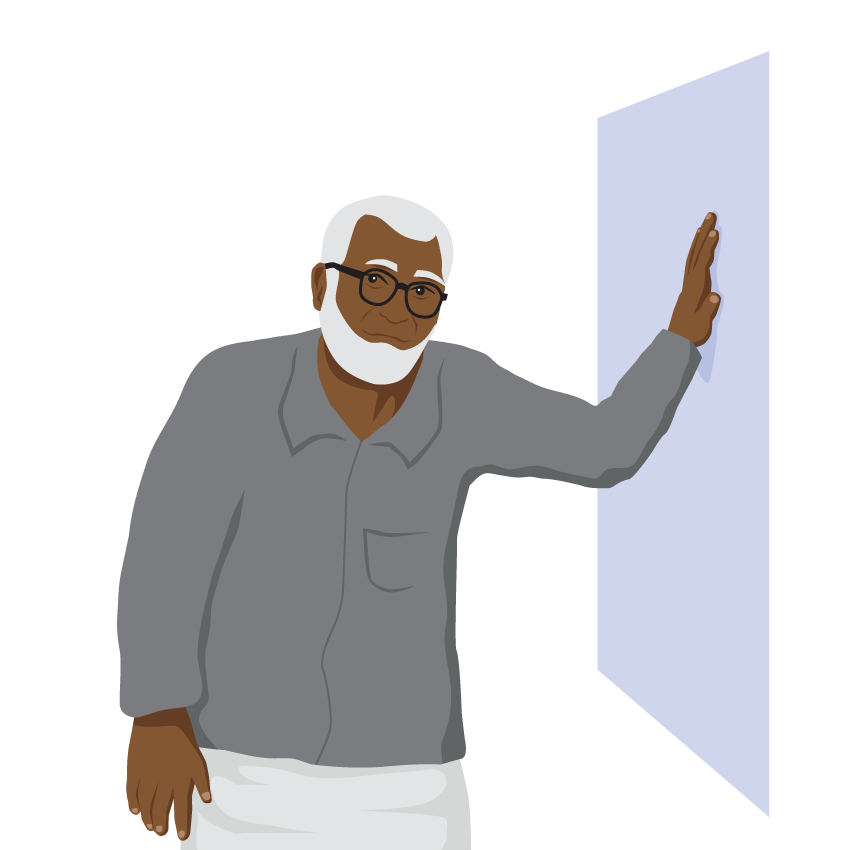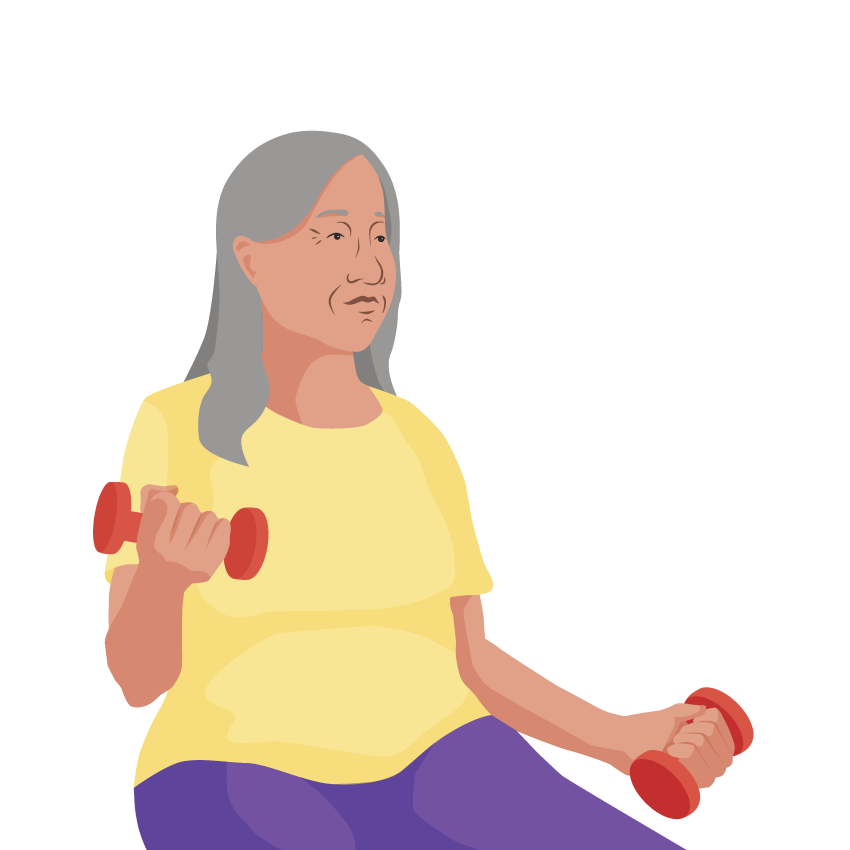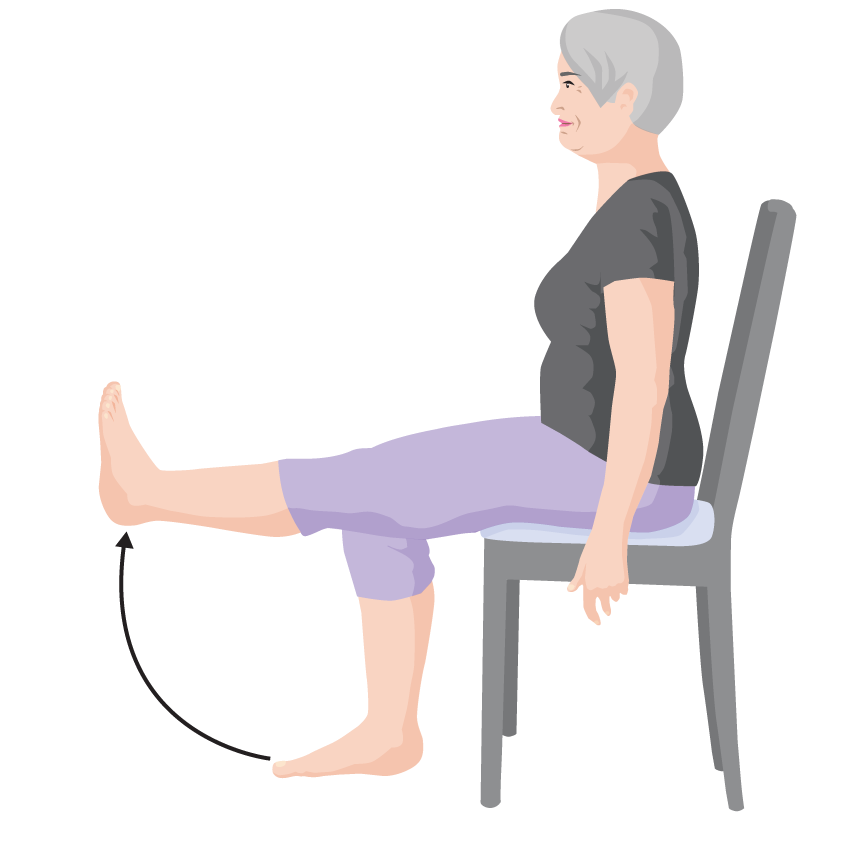General principles of muscle strength assessment
The stages of muscle strength assessment
Muscle strength assessment should always aim to identify the movements with reduced strength in order to improve function, mobility and ability to perform daily activities.
The key stages of muscle strength assessment are:
- Observation
- Assess function
- Assess strength of individual movements
Observation should be completed throughout the assessment and also forms part of the muscle strength assessment.
Observation for muscle strength assessment
Observation should be done throughout a mobility, motor function and pain assessment and is a very important part of the muscle strength assessment.
Observation can help identify the muscle groups that have reduced strength and need to be assessed further.

Signs of reduced strength:
- Any loss of smooth movement
- Slow or delayed movement
- Shaking or poor control
- Difficulty with balance or walking
- Difficulty using hands and arms
- Poor posture
- Loss of muscle bulk

When observing, remember to look for any signs of inflammation and infection.
Signs of inflammation and infection include redness, swelling and loss of function.

![]() Question
Question

Remember Nguyen?
Nguyen experienced a stroke leaving her with weakness in his left arm and leg.
Nguyen wants to be able to return to her duties as president of her community group.
What muscle groups may you need to assess for Nguyen ?
- a. Left and right hip
- b. Left and right knee
- c. Left and right ankle and foot
- d. All of the above
If you selected d, you are correct.
This may indicate that you may need assess either or all of the hip, knee and ankle and foot muscle groups for reduced muscle strength.
Example 2: You also notice that Nguyen struggles to raise
her arm to greet you as she enters the room.
For example, 2, where might this indicate that Nguyen has reduced strength ?
- a. Wrist and hand
- b. Shoulder
- c. Elbow and arm
- d. All of the above
If you selected b, you arecorrect.
This may indicate that you may need to assess the muscle strength in the shoulder. Given Nguyen’s experience, she may also have weakness in her elbow, wrist and hand muscles as well.
Assess function
Everyday activities like standing up from chair, eating, dressing and showering require the body to perform multiple movements at once.
The best way to assess a person’s ability to perform everyday activities is to assess them performing those or similar movements. This is called assessing function, or assessing functional movements.
Where possible, the person’s ability to perform functional movements should be assessed.
For each area of the body, there are different functional movements that you should assess.
Always start by allowing the person to perform the movement independently before assisting.
Reminder, functional movements are movements that use more than one muscle, group of muscles or body part at once and replicate movements performed in everyday activities, e.g. sit to stand, squats or movements using hands and arms to perform tasks.


![]() Question
Question
Why is it important
to assess functional movements?
Select all that apply.
- a. It can help you to find out which movements the person has difficulty with
- b. It allows the person to demonstrate the movements that they have difficulty with
- c. It helps you to plan the muscle strengthening exercises that may be needed for that person
- d. By assessing functional movement, and planning appropriate muscle strengthening exercises based on that assessment,
performing the muscle strengthening exercises are more likely to improve the person’s ability to perform everyday activities..
All are correct.
All of these options are reasons why it is important to assess functional movements.
If a person does have enough strength to perform one or all functional movements assessed with full strength, this does not mean they will not benefit from muscle strengthening exercises.
![]() Question
Question
An older person with osteoarthritis in their right hip presents to your clinic. They work as a carpenter and have pain in the right hip when trying to bend down at work.
Will muscle strengthening exercises still be beneficial for this person?
- a. Yes
- b. No
If you selected a, you are correct.
Even though this person has full strength on all functional movements assessed and is physically fit, they will still benefit from the psychological and social benefits of muscle strengthening exercises as well as helping maintaining their general health and continuing to improve their muscle strength.
If a person does have full strength for all movements assessed, what are some other reasons, other than maintenance of a health condition, that people may benefit from muscle strengthening exercises ?
- a. When training for a physical activity, sport or event
- b. When trying to build muscle strength beyond their baseline level
- c. To improve their mental wellbeing or reduce stress
- d. To meet new people or maintain friendships by performing muscle strengthening exercises in a group setting
- e. To maintain strength and fitness or improve general health
All are correct.
All of these options may be reasons that a person may commence or continue doing muscle strengthening exercises when they have full strength.
Assess strength of individual movements
Assessing individual movements helps to:
Identify reduced strength in individual muscles or muscle groups
Improve performance of functional movements by identifying individual movements with reduced strength

![]() Question
Question
Which of these are
individual movements?
Select all that apply.
- a.
-

- b.
-

- c.
-

- d.

If you selected a and b , you are correct.
These exercises only involve one main muscle group each
